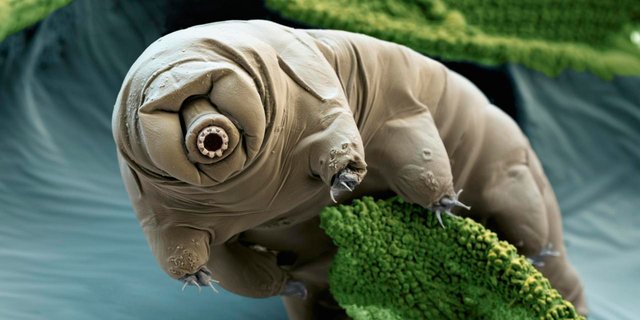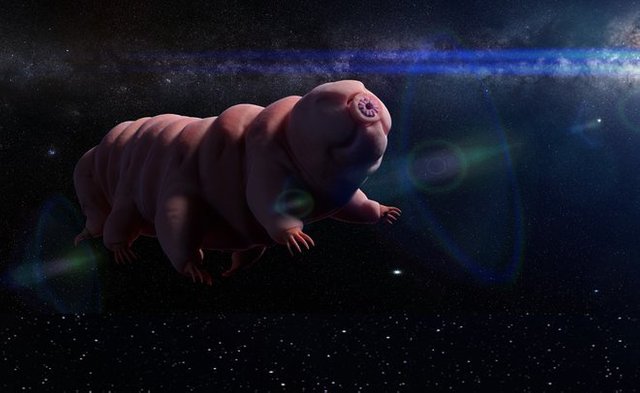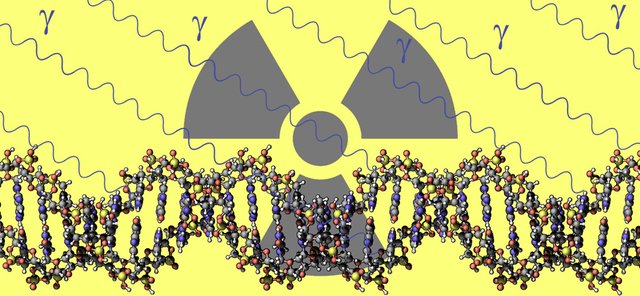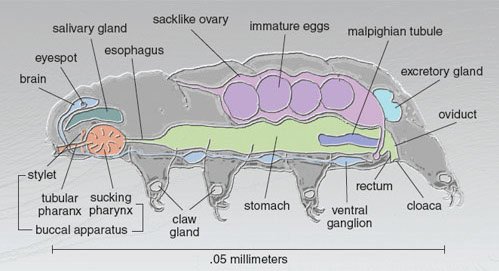
Boil them, freeze them, crush them, dry them out or even send them to space it will survive. This tough creature is known as Tardigrades or water bears, a water-dwelling, eight-legged, segmented micro-animals.
Tardigrades survive harsh space environment.
 Source: livescience
Source: livescienceTardigrades or water bears, can live just about anywhere. Infact, a space mission TARDIS that was conducted last 2007 show that Tardigrades can survive the extreme dehydration and cosmic radiation. These experiment conduct try to find out how the Tardigrades would fare in the harsh space environment. Tardigrades in space’ (TARDIS) mission last 12 days orbiting Earth with some 3000 Tardigrades aboard on ESA’s orbital Foton-M3 capsule.
Survival in space is often linked to a much wider theory about how life originated here on Earth. “Perhaps the starting point for life was not even here on Earth,” says Demets. “Could life as we know it have started elsewhere, to be carried later for instance on a meteorite and delivered here on Earth? Favourable conditions meant that it could further propagate, develop, grow and live on. Now we have actually found some organisms that can survive under harsh space conditions.”
Tardigrades can withstand extreme temperatures.
 Source: Wide Temp
Source: Wide TempThey can survive kin environments as cold as -272.8 degree Celsius (-459 degree Fahrenheit). And can withstand temperatures higher than 148 degree Celsius (300 degree Fahrenheit).
For most animals, life without water is completely impossible. However, Tardigrades can survive extreme desiccation. Researchers found that water bears curl up into a dry shell upon drying. This state is commonly known as tun and it resembles closely to death. Tardigrades can live in tun state for decades. During this state, their metabolic activity gets as low as 0.01% of normal levels.
Tardigrades also have unique anti-dehydration proteins called Tardigrades-Specific Intrinsically Disordered Proteins (TDPs). These proteins exist in jelly-like form in the presence of water. However, during desiccation these proteins turn into a glass-like structure protecting all the dehydration-sentive tissue from harm inside the cells. Infact, in 1995 a dried Tardigrades were brought back to life after 8 years.
Tardigrades can also tolerate ice formation with their cells in extreme cold. They produce chemicals called ice nucleating agents. These agents help them form crystal outside their cells rather than inside. As the result their vital molecules are protected from cold.
Tardigrades withstand extreme pressures.
 Source: kazanreporter.com
Source: kazanreporter.comTardigrades can bear extreme pressures that would squash most animals flat. Under tun state, water bears can survive a pressure of 600 megapascals.
Tardigrades withstand extreme radiation.
 Source: ucl.ac.uk
Source: ucl.ac.ukThey can also survive huge amounts of radiation. Thanks to a protein called Dsup, which protect them from damaging X-rays. Researchers were able to transfer that resilience to human cells. Tardigrade-tinged human cells suppressed X-ray induced-damage by about 40%. These findings can one day benefit human undergoing radiation therapy.
Anatomy of the Tardigrades

Source: tardigades galore
Tardigade's genome represents great genetic treasures and is something new to us, we really just at the beginning of exploring it, nobody knew about them. They are truly ancient as research found. Fossils of these creature have been dated back to over 500 million years ago.

Related article:
https://steemit.com/steemstem/@oendertuerk/researchers-believe-only-one-species-will-survive-the-end-of-the-world-tardigrades
Really cool and interesting, thanks for sharing!
Downvoting a post can decrease pending rewards and make it less visible. Common reasons:
Submit
Thanks for your word friend.
Downvoting a post can decrease pending rewards and make it less visible. Common reasons:
Submit
Glad to see you've started writing science content man!! Good luck!!
Downvoting a post can decrease pending rewards and make it less visible. Common reasons:
Submit
Thanks man... but look at cheetah try to ruin my first research works.
Downvoting a post can decrease pending rewards and make it less visible. Common reasons:
Submit
Man that happens, Just do your best to rephrase the words and write in your own words. Cheetah marks your post whenever if finds similarity in the content, but you did mention the source, so you're right on your side. i had this issue too once, but I too had mentioned my resource, so no harm was done.
Downvoting a post can decrease pending rewards and make it less visible. Common reasons:
Submit
i thought caterpillar survive the dinosaur world ;P gosh! really something new to me tho..nice article, and so i know it..worth to read!
Downvoting a post can decrease pending rewards and make it less visible. Common reasons:
Submit
Thank's man...
Downvoting a post can decrease pending rewards and make it less visible. Common reasons:
Submit
nope..thank you for this writing! :D love it
Downvoting a post can decrease pending rewards and make it less visible. Common reasons:
Submit
Hi! I am a robot. I just upvoted you! I found similar content that readers might be interested in:
http://www.esa.int/Our_Activities/Human_Spaceflight/Research/Tiny_animals_survive_exposure_to_space
Downvoting a post can decrease pending rewards and make it less visible. Common reasons:
Submit
Hey, as I can see you got caught by @cheetah, I also got this once. This will not give you the actual value of your upvotes and your followers also stop following your post. Next time don't just copy all the things, instead just try to write in your own words. That will help you, you can do better.
Cheer
Downvoting a post can decrease pending rewards and make it less visible. Common reasons:
Submit
Thanks man...
Downvoting a post can decrease pending rewards and make it less visible. Common reasons:
Submit